Digital Poster
AI Prediction via Multiparametric MRI
ISMRM & ISMRT Annual Meeting & Exhibition • 10-15 May 2025 • Honolulu, Hawai'i

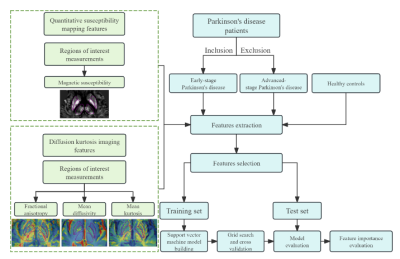 |
Computer Number: 49
3390. Utilizing
combined quantitative multiparametric MRI as potential
biomarkers for improved early-stage Parkinson's disease
diagnosis
Y. Yang, C. Li, C. Wang, H. Zhao, J. Zhang, Z. Xu
The First People’s Hospital of Foshan, Foshan, China
Impact: This study demonstrates the potential of
combining QSM and DKI features to improve early-stage
Parkinson's disease diagnosis, offering clinicians a
non-invasive tool for detection. It paves the way for future
research into MRI-based biomarkers for disease progression
monitoring.
|
|
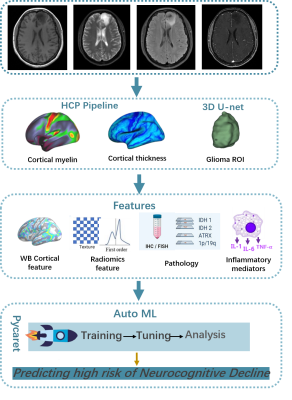 |
Computer Number: 50
3391. Integrating
Whole-Brain Tumor Burden MRI Features with Inflammatory
Mediators to Predict High Risk of Neurocognitive Decline in
Glioma Patients
S. Zhang, H. Sun, Q. Gong, Q. Yue
west china hospital of sichuan university, Chengdu, China
Impact: This study underscores the critical role of
whole-brain tumor burden MRI features, pathological and
inflammatory markers to predict ND. It encourages new
research into inflammation-cognition links, promotes
personalized care in glioma treatment, and could
revolutionize approaches in neuro-oncology patient
management.
|
|
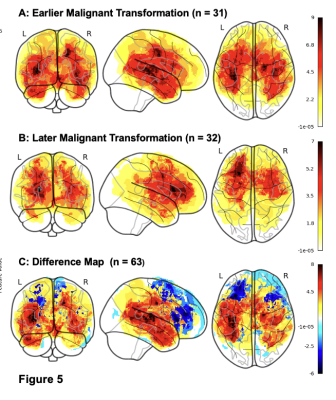 |
Computer Number: 51
3392. Mathematical
Modelling of Malignant Transformation in Low Grade Gliomas and
survival prediction with XGBoost.
T. Lily, J. Ruffle, S. Brandner, P. Nachev, H. Hyare
UCL, London, United Kingdom
Impact: Prediction of malignant transformation of low
grade gliomas will allow precision treatment decisions and
personalized medicine.
|
|
|
Computer Number:
3393. WITHDRAWN |
||
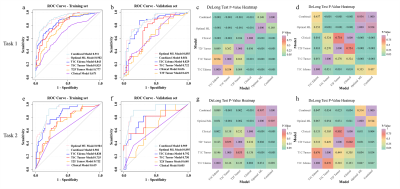 |
Computer Number: 52
3394. Predicting
the Molecular Subtypes of 2021 WHO Grade 4 Glioma by a
Multiparametric MRI-Based Machine Learning Model
W. Xu, Y. Tan
Shanxi Medical University, Taiyuan, China
Impact: l The multiparametric MRI machine learining
model can accurately predict molecular subtypes of 2021 WHO
grade 4 glioma, offers substantial prognostic value and
provides a new perspective for clinical decision-making.
|
|
 |
Computer Number: 53
3395. Prediction
of meningioma brain invasion based on preoperative MRI
noninvasive deep transfer learning radiomics model
D. Yuan, J. Zhang, T. Ma, S. Diao, X. Zhang, T. Han
Tianjin Huanhu Hospital, Tianjin, China
Impact: Our
model, which combines clinical and deep-transfer learning
radiomics features, demonstrates high efficacy in predicting
brain invasion in meningiomas and may contribute to improved
prognoses for patients.
|
|
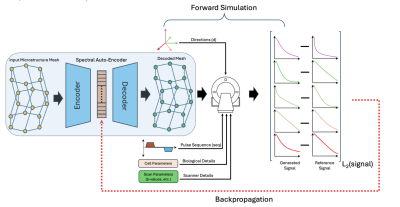 |
Computer Number: 54
3396. ReMiDi:
Reconstruction of Microstructure from Diffusion MRI Signal
P. P. Khole, Z. Petiwala, S. P. Magesh, E. Mirafzali, U.
Gupta, J-R Li, A. Ianus, R. Marinescu
University of California Santa Cruz, Santa Cruz, United States
Impact: Our work achieves a next-generation dMRI
reconstruction, opening the ability to reconstruct brain
microstructure with arbitrary meshes. This will enable
in-vivo mesoscopic mapping of the human brain, and lead to
improved biomarkers for Multiple Sclerosis and Traumatic
Brain Injury.
|
|
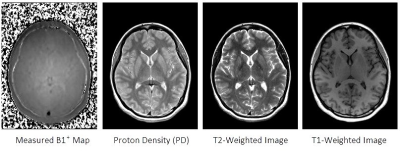 |
Computer Number: 55
3397. Transmit
radiofrequency field maps can be predicted from standard brain
images using machine learning.
M. Zakershobeiri, C. Beaulieu, P. Seres, A. Wilman
University of Alberta, Edmonton, Canada
Impact: Prediction of B1+ maps
from standard clinical brain images will enable more
widespread use of quantitative MRI in clinical settings
where B1+ maps
are not typically acquired.
|
|
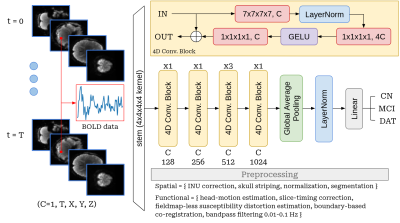 |
Computer Number: 56
3398. Alzheimer’s
Disease Classification in Functional MRI With 4D Joint
Temporal-Spatial Kernels in Novel 4D CNN Model
J. Salazar Cavazos, S. Peltier
University of Michigan, Ann Arbor, United States
Impact: The 4D CNN model improves Alzheimer’s disease
diagnosis for rs-fMRI data, enabling earlier detection and
better interventions. Future research could explore
task-based fMRI applications and regression tasks, enhancing
understanding of cognitive performance and disease
progression.
|
|
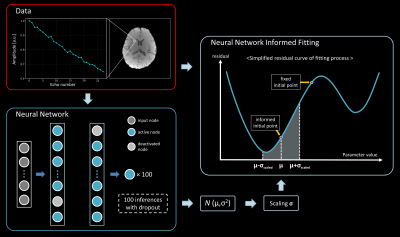 |
Computer Number: 57
3399. Fast
and Reliable Myelin Water Fraction Estimation Using Neural
Network Informed Non-Linear Least Squares Fitting
J. Baek, D. Kim
Yonsei University, Seoul, Korea, Republic of
Impact: By combining ANN and NLLS, the proposed method
enhances speed and accuracy in MWF estimation, enabling
clinicians to reliably assess more patients with
neuroinflammatory diseases in the same amount of time,
potentially improving diagnosis and treatment outcomes.
|
|
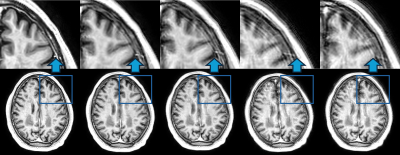 |
Computer Number: 58
3400. A
Deep Learning-based Assessment Tool for the Objective Evaluation
of Intracranial MRI Quality in Stereotactic Radiosurgery
M. Kim, S. Oh, K. Renick, A. Heermann, F. Cherop, D. Kim, J.
Chun, M. Schmidt, T. Kim
Washington University in St. Louis, St. Louis, United States
Impact: Due to the precise nature of Gamma Knife
Stereotactic Radiosurgery, accurate target delineation is
crucial. The development of an objective intracranial MRI
evaluation tool will contribute to ensuring consistent image
quality in treatment planning, thereby improving clinical
outcomes.
|
|
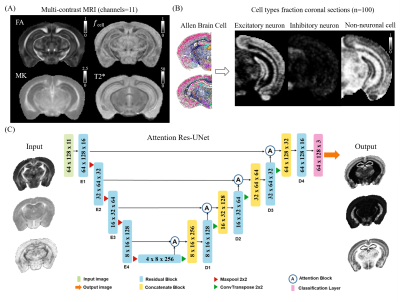 |
Computer Number: 59
3401. Virtual
Cell Type Atlas of Mouse Brain from MRI Signatures using
Attention Res-UNet
Y. Shen, Y. Shen, H. Xu, T. Zheng, Y. Huang, S. Li, Q. Zhu,
Z. Cao, Z. Zhao, D. Wu
Zhejiang University, Hangzhou, China
Impact: We demonstrated MRI-based deep learning could
predict three-dimensional representations of different cell
types at whole-brain level, which were consistent with
typical cell distribution patterns and regional characters.
Our findings highlight the potential of MRI for predicting
three-dimensional cell atlas.
|
|
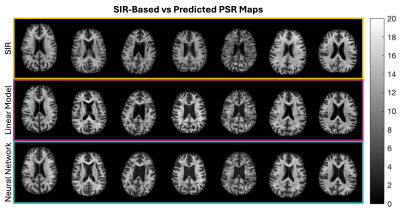 |
Computer Number: 60
3402. Predicting
Quantitative Myelin Images from Clinical Scans and DTI using
Linear and Neural Network Models
K. Bohlke, F. Bagnato, A. Stokes, R. Dortch
Barrow Neurological Institute, Phoenix, United States
Impact: Leveraging typical clinical scans to predict PSR
maps using a simple linear model can improve diagnostic
capabilities for multiple.
|
|
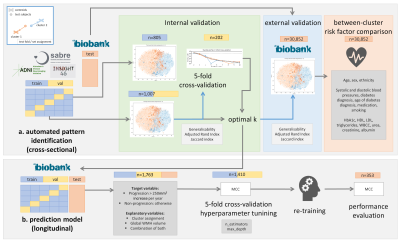 |
Computer Number: 61
3403. Location
patterns of WMH in a multi-cohort study — generalisability and
evaluation
X. Zhao, I. Malone, D. Cash, A. Wong, N. Chaturvedi, A.
Hughes, J. Schott, J. Barnes, C. Sudre
University College London, London, United Kingdom
Impact: This framework provides a reproducible solution
for identifying WMH patterns in over 31,000 participants
across 4 cohorts. By characterising WMH distribution and
progression, it informs future research into ageing and
neurological disease pathways, and enhances the foundation
for personalised care.
|
|
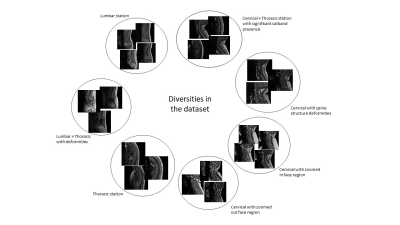 |
Computer Number: 62
3404. Knowledge-based
Labeled Data Selection in Semi-Supervised Learning
A. Saxena, V. Singhal, C. Bhushan, D. Shanbhag
GE Healthcare, Bangalore, India
Impact:
We present the importance of data diversity representation in the labelled data of semi-supervised model learning.
|
|
 |
Computer Number: 63
3405. Safety-Optimized
SAR Prediction for MRI Using Deep Learning Method at 5.0 T
S. Hayat, S. Che, J. Liu, Z. Cui, S. Ding, C. Wang, T.
Meersman, X. Zhang, Y. Li
Lauterbur Imaging Research Center, Shenzhen Institutes of Advanced Technology, Chinese Academy of Sciences, Shenzhen, China
Impact: This study offers more accurate SAR predictions
that support safe, efficient MRI operations without
excessive safety margins using machine learning methods. The
model's precision increases patient safety and reduces scan
times in high-field MRI procedures.
|
The International Society for Magnetic Resonance in Medicine is accredited by the Accreditation Council for Continuing Medical Education to provide continuing medical education for physicians.